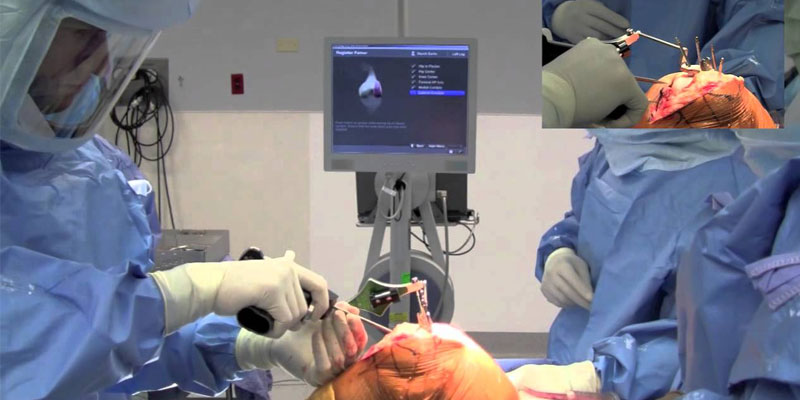
How Is Total Knee Replacement Surgery Performed?
10 NovTotal knee replacement in Bangalore involves removing the entire knee joint, or only the infected part, and replacing it with artificial prosthesis; and we all know that. But, if you are the inquisitive one who wants to learn deeper into how it is done, this is the blog for you.
As general, you may know that in a knee replacement surgery, the surgeon removes the damaged portions of the knee joint at the end of the femur or thigh bone, and top of the tibia or the shin bone, to replace them with prosthetic components. In certain situation, the back of the patella or kneecap is also resurfaced. But now, let us get into the step-by-step procedure of a total knee replacement surgery.
- First and foremost, the patient’s body status and his health condition are thoroughly checked. The most important signs that are checked include the body temperature, heart rate, blood pressure, and oxygenation levels. Only if all these are normal, can the surgery take place.
- Before starting the surgery, the patient is given anesthesia. This could be a general anesthesia where the patient is put to sleep, or it could be regional to block the sensation from the waist down along with a relaxant. The type of anesthesia to be given is decided upon by the surgeon after the body and situation analysis.
- Now that everything is set, the surgery begins by making an incision down the center of the knee, around 8 – 10 inches long. The surgeon then cuts through the tissue and quadriceps tendon deeper inside, and then flips over the kneecap so that he has access to the femur and tibia. Then, the knee is bent to 90° to improve the surgeon’s ability to assess the joint. (However, if suitable, surgeons may also use the minimally invasive technique that involves a smaller incision to be made.)
- Then, a bone saw is used to remove the damaged areas of the bones at the bottom of the femur and top of the tibia. Each bone is then reshaped to exactly fit the prosthesis, with the help of a metal jig or computer assistance to make the cuts precise. If required, the surgeon may then resurface the back of the kneecap, and attach an implant there. A polyethylene component may be attached here to facilitate smooth and easy gliding.
- Next, a flexible cushion made of polyethylene is attached on top of the new tibia surfaces, wherein the spacer acts as a shock absorber between the two new prosthetic surfaces.
- The leg is then extended to test the new components and the range of the knee’s motion; and the knee is straightened to let the components and bone bond together perfectly. If it is a cemented procedure, the bone cement will take only 10 minutes to bond.
- The surgery ends with repairing any deep tissues that may have been cut during the surgery, and stitching the skin at the incision.
Surgical procedures differ depending upon the patient’s condition and requirements, but these are the traditional steps involved in a knee replacement surgery. And, God forbid, if you ever have to undergo a total knee replacement in Bangalore, make sure you approach Aditi Corporation to provide you with superior quality prostheses and bone cement to help you stay at ease during as well as after surgery.

